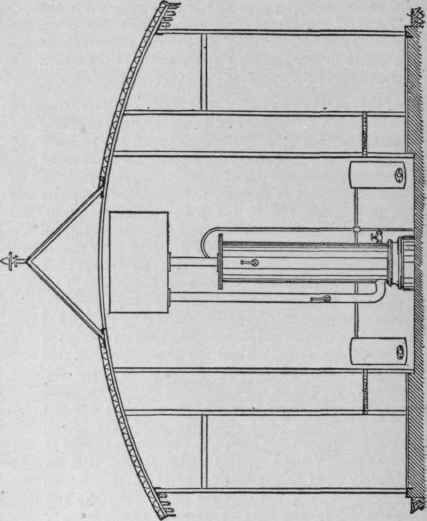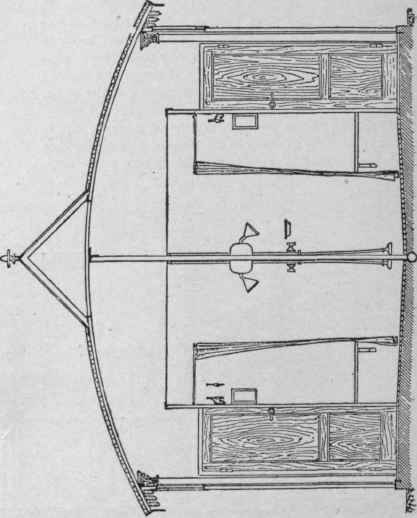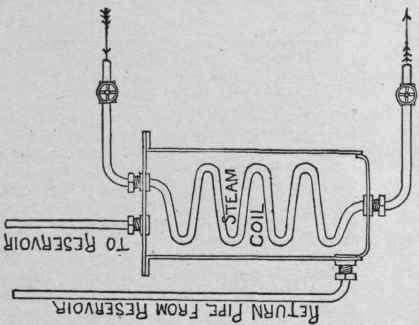European Rain Baths
Description
This section is from the book "American Plumbing Practice", by The Engineering Record. Also available from Amazon: Plumbing: A working manual of American plumbing practice.
European Rain Baths
(Published In 1891.)
The recent agitation in New York City for public baths lends renewed interest to a number of descriptions of similar European establishments, published in The Engineering RECORD several years ago. The illustrations first published in The Engineering RECORD of October 11 1883, show a bath exhibited at the Berlin Hygienic Exhibition, by Mr. David Grove, of Berlin. The establishment was designed to afford baths at very low prices, in reach of the poorer classes, and is an extension of a plan first adopted by Mr. Grove in a bath at the barracks of Kaiser Franz Garde Grenadier Regiment No. 2, which was established in 1878. At the Berlin exhibition, baths were given at a price of about 2½ cents each, including soap and towels.
A special building of corrugated iron was erected at the Berlin exhibition for the bath. Each bathing cell in the men's department is provided with a shower bath at about 90° Fahr., and a small douche fitted to a flexible tube and supplied with cold water. In the cells of the women's department the arrangement is the same, with the addition of a similar douche supplied with warm water. The water for the baths is heated by an apparatus placed at one end of the building in the center of the chamber used for drying the towels Either fire or steam can be employed as heating agent for the apparatus. At the end of the building opposite to that containing the drying chamber and heating apparatus is the wash-house containing a machine for washing the towels.

The building has brick foundations for outside and middle partition walls: thickness of foundation one brick; height. 12 inches. Floors are made of one course of bricks covered with asphalt. Each cell has, besides, a movable grating of laths covering the whole floor The cells are drained by a cast-iron pipe under the floors with a branch to each cell. The inlets to the drains are covered with a copper sieve. The drain pipe is trapped at its lower extremity at the end of the building. The supply pipe for each douche is a ¾ -inch wrought-iron pipe.
The boiler of the shower bath exhibited is arranged for heating by steam only, as shown. If a fire were placed beneath the boiler the condensed steam would have to be carried off at the lower end, of side of boiler and a smoke flue could be arranged in the center of the steam coil. The water for the shower bath (only warm) is turned on or off by a closet valve which allows a certain regulated quan. tity of water to pass through, and then closes automatically if not held open The valves are provided with a chain and pull. The douches each have a separate screw-down tap for cold or warm water only. (See letters and explanation on illustrations )
The rooms of the bath at the exhibition were not heated, as the establishment was intended for use only during the exhibition, which closed before winter. The best place for fixing pipes for heating the rooms would probably be along the foot of the outer wall in the passages, or under the floors of the latter The reservoir was made of wrought iron, and was about 59 inches long 39 inches wide, and 30 inches high.
The cut and data of the public bathing-houses at Frankfort-on-the-Main. Germany, were given in The Engineering RECORD of May 25 1889. Space, water and fuel were limited, and it was desired to furnish baths with soap and towel for about 2 cents each The roof of the house is an octagonal pyramid, 14 feet 9 inches high in the center. The outside octagonal wall is 11 feet 9 inches high and 13 feet 9 inches long on each face M is the entrance for women, and N that for men. A is the cashiers office: B is the linen-room; C, the drying room; S. chimney; E, the stairs to the basement where a furnace heats water in reservoir D This is in the upper part of room C The same furnace also heats the air supplied to each bathroom through registers K. L is the partition between the mens and women's corridors; I 1 are water-closets- F F are sliding doors to dressing-rooms G, which are supplied each with a chair, a mirror, and a wardrobe. The floors are covered with linoleum The partitions O are about 7 feet 3 inches high. P are waterproof curtains for the bath closets H cocks, by which the bather can regulate the quantity and temperature of the water at will. The floors of the closets have wooden gratings, through which the water is drained off.
There is no full-length bath, but each closet contains a basin and a douche with hoc and cold water



PUBLIC BATHS IN THE BERLIN EXHIBITION.

Boiler of Shower Bath.
The establishment cost 25,000 francs, and it is estimated that it will cost about 4,000 francs per year to maintain it.
A public bath at Vienna, Austria, described in the RECORD of August 4, 1888, occupies the ground floor of a house, and comprises, on the right, 42 baths for men; on the left, 28 baths for women, and at the end a lavatory. Each division contains an attendant's hall, a dressing-room and the bathing-room. In the latter a closet is assigned to each bather for his clothes.
The bathrooms have sheet-iron walls, and are closed by curtains. They are 2.6 feet deep, 3.28 feet long, and each is supplied with a douche cock, which the bather can operate at pleasure. The passages between the groups of baths are 3.28 feet wide, and are paved with Holland tiles set in beton. Water is taken directly from the city mains to two reservoirs, each having a capacity of 3,434 gallons. The water is maintained in the reservoirs at a temperature of 68° Fahr. in summer and 104 degrees in winter by means of hot-water coils separately heated. Each reservoir is employed alternately. The rooms are heated by an independent hot-water system.

For the modest sum of 5 kreutzers each bather is entitled for 20 minutes to the use of a dressing-room, douche room, and 10½ gallons of water, besides a pair of drawers and a towel, and for each woman a bathing dress besides.
According to Dr. Lassar, Professor of Hygiene at the University of Berlin, who took the initiative in the establishment of this type of bath, from one-eighth to one-quarter of the above quantity of water would suffice. The total cost of establishing the baths was 43,855 fl., and the annual maintenance, inclusive of 5 per cent, interest on the first cost, is 17.195.5 fl.
Continue to:


